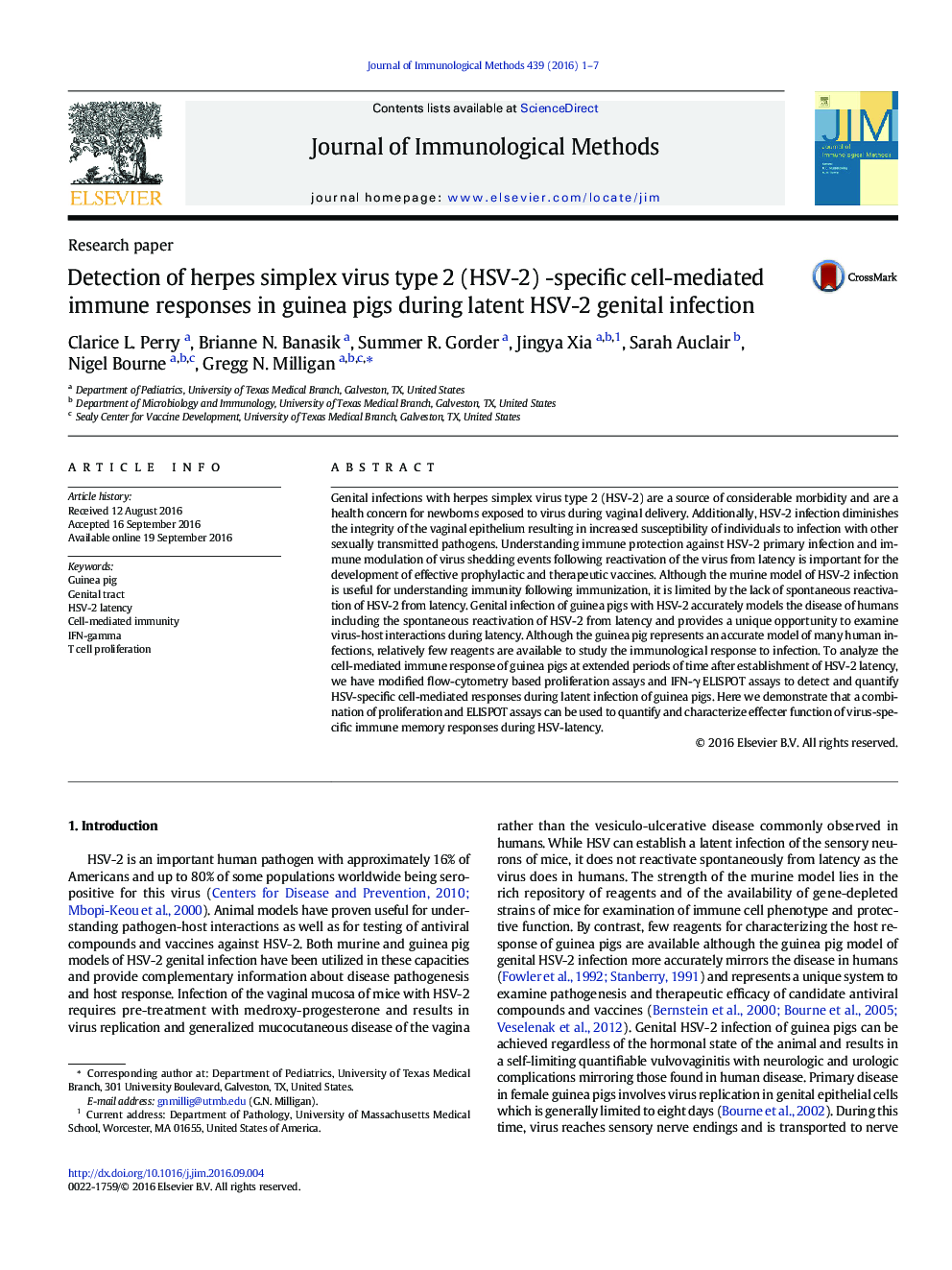| Article ID | Journal | Published Year | Pages | File Type |
|---|---|---|---|---|
| 5522067 | Journal of Immunological Methods | 2016 | 7 Pages |
Genital infections with herpes simplex virus type 2 (HSV-2) are a source of considerable morbidity and are a health concern for newborns exposed to virus during vaginal delivery. Additionally, HSV-2 infection diminishes the integrity of the vaginal epithelium resulting in increased susceptibility of individuals to infection with other sexually transmitted pathogens. Understanding immune protection against HSV-2 primary infection and immune modulation of virus shedding events following reactivation of the virus from latency is important for the development of effective prophylactic and therapeutic vaccines. Although the murine model of HSV-2 infection is useful for understanding immunity following immunization, it is limited by the lack of spontaneous reactivation of HSV-2 from latency. Genital infection of guinea pigs with HSV-2 accurately models the disease of humans including the spontaneous reactivation of HSV-2 from latency and provides a unique opportunity to examine virus-host interactions during latency. Although the guinea pig represents an accurate model of many human infections, relatively few reagents are available to study the immunological response to infection. To analyze the cell-mediated immune response of guinea pigs at extended periods of time after establishment of HSV-2 latency, we have modified flow-cytometry based proliferation assays and IFN-γ ELISPOT assays to detect and quantify HSV-specific cell-mediated responses during latent infection of guinea pigs. Here we demonstrate that a combination of proliferation and ELISPOT assays can be used to quantify and characterize effecter function of virus-specific immune memory responses during HSV-latency.
